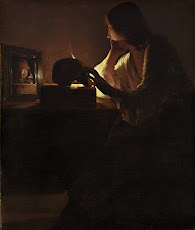Early Modern Art: The Influence of Innovations on Art - Art Deco
Art Deco
The Art Deco style is the direct result of innovations and trends toward nonconventional means of art production. Art Deco is a very popular style to this day and is very recognizable. Largely the movement has roots in industry and design, with many of the pieces from the style being mass produced and sold. Often pieces from the movement are designs rather than singular titular pieces due to the nature of the innovations and production of the time. Art Deco has a few consistent features across the majority of it's works. The movement's nature was initially experimental but grew consistently into patterns and geometric designs. These geometric features and repeating patterns can be seen in all of the following pieces from inspirational Art Deco artists.
Modes D'Hiver by Erte in Paris, 1921
Chrysler Building designed by William Van Alen in New York City, 1928
While art movements spreading into architecture or vice versa was far from new, the first skyscrapers had just begun to be built near the era where Art Deco was rising. With these new monumental structures, William Van Alen took on designing the Chrysler Building, as depicted above. As a native of New York, Van Alen had studied in Paris and returned and opened an architecture firm and became a prolific architect in New York. However Van Alen caught the world's attention when his projected Chrysler building was aimed to become the tallest building in the world. With the world watching, Van Alen created the building in a modernistic Art Deco style and it became the tallest man made structure for three years until the construction of the Empire State Building. Utilizing the newly found technques and technology used to create skyscrapers, Van Alen projected the Art Deco movement worldwide by creating the tallest building ever in the template of the the sensational style. To this day the Chrysler building is one of the most recognizable building in New York City. The cascading arches and 180 foot spire mark the Chrysler Building with its titular style and the iconic lights lead the eye upwards.
Emile-Jacques Ruhlmann is another monumental designer besides Erte. Ruhlmann was a French furniture designer and interior designer. Many of his works were produced at a large scale and became symbolic of the era and a staple of the Art Deco Style. Utilizing the simple ornate style inherent to Art Deco, Ruhlmann produced very complete and sound designs in his works of furniture. This particular piece, the Etat cabinet was commissioned by The Metropolitan Museum of Art in 1925. Uniquely, many of Ruhlmann's furniture designs utilized interlocking pieces of ivory and wood to produce the design rather than paints, prints, or veneers. Beyond his iconic furniture designs, Ruhlmann was also an interior space designer, and he would design furniture specific to a room that he was decorating. His strong designs and patterns and ornate organization championed Ruhlmann as another strong influence of the Art Deco style.
All of these pieces and artists are inspirational in their stories and artwork, pioneering the Art Deco style that is well known now. I find much of Art Deco designs visually appealing and these are no exemption to that with their bold takes.
Works Cited
%20_%20_Modes%20d'Hiver__%20Cover%20Design%20for%20_Harper's%20Bazar_%20_%20The%20Metropolitan%20Museum%20of%20Art.jpg)





Comments
Post a Comment